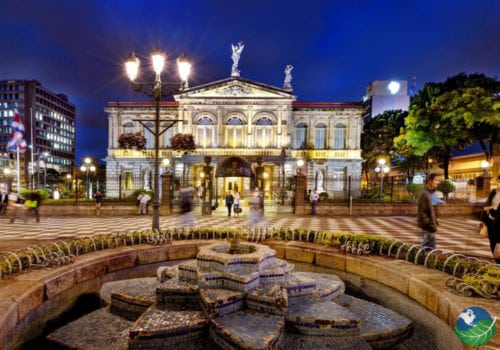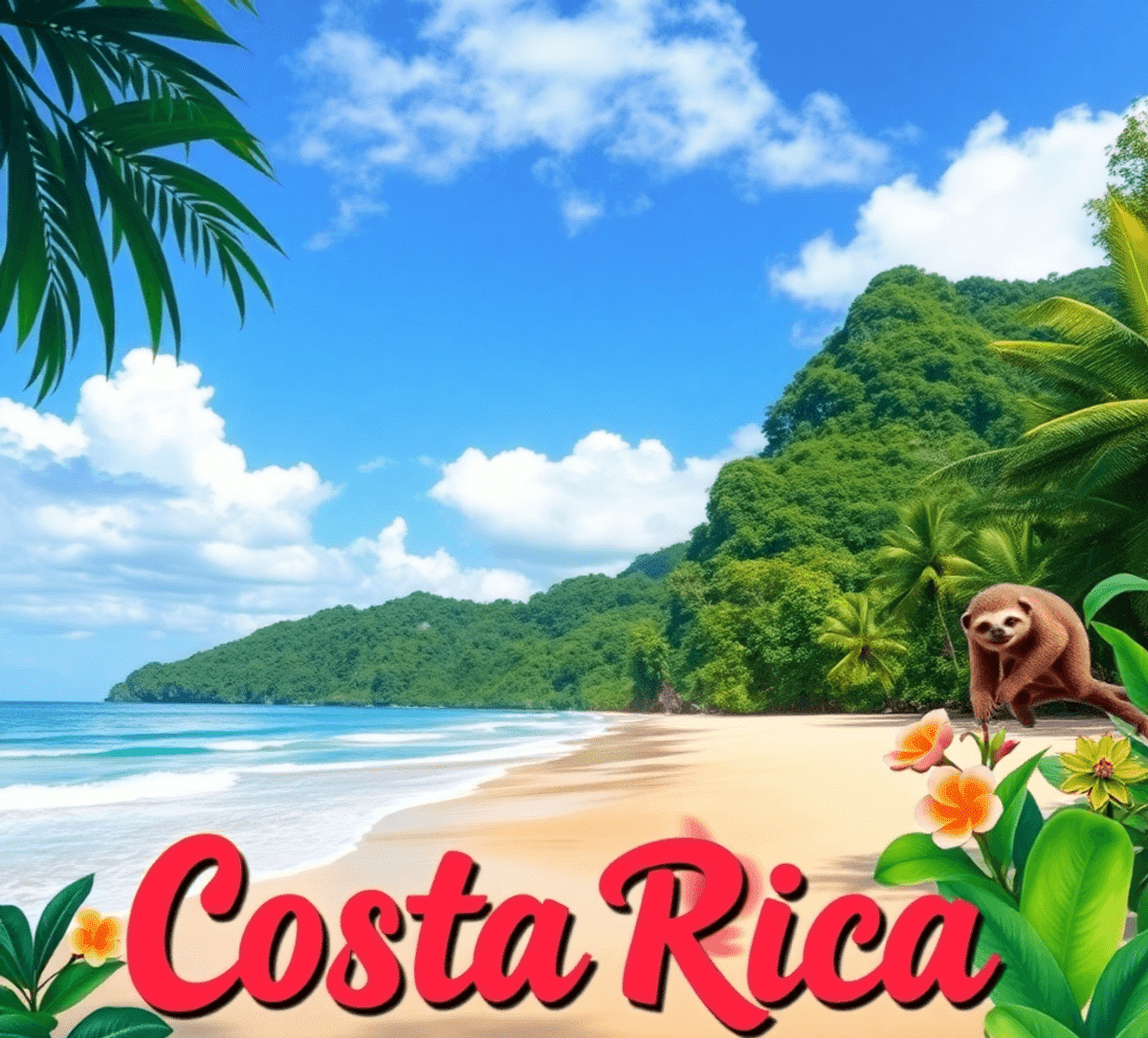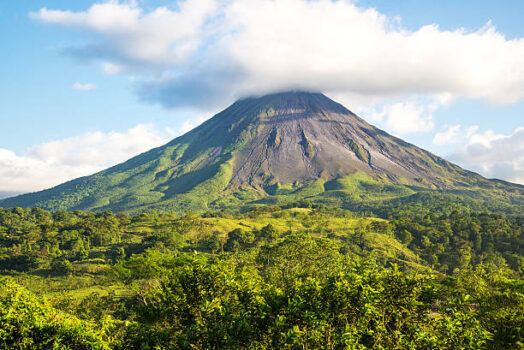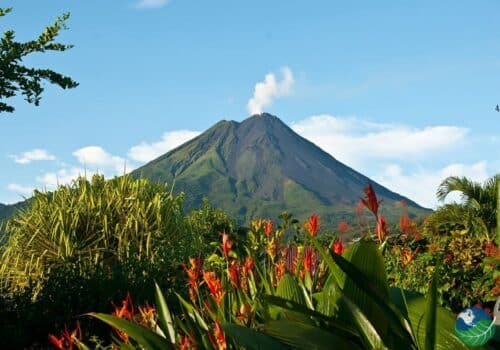As the largest and most populous city in Costa Rica, San Jose is a popular destination for tourists and expats alike. Named after Saint Joseph, it is the heart of the country, and its inhabitants are understandably proud of their home. It also feels surprisingly modern and lacks the poverty of other Central American capitals, while at the same time possessing thriving cultural and business scenes. San Jose is also home to one of two international airports, the Juan Santamaria International Airport (SJO). This guide will tell you everything you need to know about the Costa Rica capital.
Geography and Layout
San José’s located right in the center of the country within Costa Rica’s central valley. This is a broad, flat plain that sits at an altitude of between 800 and 1500 meters above sea level. The Costa Rican capital itself is at an elevation of 1172 meters. The geography of the Central Valley and the fertility of the soil provided by nearby volcanos make it an excellent location for a city. All these factors have helped San José grow to enjoy the importance which it has today.
The city divides into eleven districts and each of these divided into neighborhoods or ‘barrios’ for administrative purposes. Downtown San José is spread across four districts – Cathedral, Hospital, Merced, and Carmen. The surrounding communities are mainly residential. However, significant buildings can still be found within the outer neighborhoods – the presidential house being located in Zapote and the University of Costa Rica in San Pedro, for example.
The Center of San José
The center of the city is built around a large avenue. Known as the Paseo Colon or Avenida 2 depending on how far down you are. At one end is the Sabana Metropolitan Park which is the largest green space within San José. At this end, the street is home to many large businesses and diplomatic buildings as well as the city’s main hospital. Further along is the oldest part of the city, with a central plaza of San José and the cathedral being where the avenue meets Alfredo Volio street.
The rest of the city center is arranged in a grid pattern around the Avenue, and within this area, you find most of the shops, museums, and hotels. The roads running north-south are called Calles, and those running east-west are Avenues. The streets and avenues are all numbered, but not very well marked, so it can be tricky to get around. Additionally, over the years San Jose expanded very quickly, meaning that the grid pattern isn’t always very reliable.
People of the Costa Rica Capital
The San José metropolitan area is home to two million people and 30% of the nation’s population. Its population is a microcosm of the country as a whole, with all of Costa Rica’s regions being represented by its inhabitants. Most people are either white or mestizo (a mix of Spanish and indigenous ancestry), although representatives of the country’s black and aboriginal population are also found here. It is also home to many of Costa Rica’s small Chinese and Arab communities. A final group which calls San Jose home, are the many expats from North America and Europe.
As the nation’s capital, San José has produced many of Costa Rica’s most famous people. Several presidents were born there, and of course, all moved to the city upon taking office. On top of this, several singers and actors have lived in San José, and perhaps the most famous are Giannina Facio who has appeared in films such as Gladiator and Black Hawk Down. Many of the country’s best sports stars have also called San José home, including Paulo Wanchope, Joel Campbell, and Brian Ruiz.
History – The first Capital of Costa Rica: Cartago
The Costa Rica capital founded in 1738 with the aim of providing a center of administration in a scattered part of the Spanish empire. At the time, the country was a neglected backwater ruled from Guatemala. Because of this, San José is one of Latin America’s youngest capitals, and the whole region remained unimportant even after independence. Cartago was the first capital of Costa Rica. The capital was moved to San José because it supported a Republican system in contrast to Cartago, which wanted to reunite with the Mexican Empire. In 1823, San José was named the capital of Costa Rica, and it took until 1838 for the city to officially become the capital of an independent nation when the Federal Republic of Central America disbanded.
From this moment onwards, San Jose started to develop. The country as a whole grew economically and started to become one of the most prosperous in Central America. The population increased from the beginning of the 20th century, and it soon became an important commercial hub. Throughout its history, the city’s blessed with peace and stability – especially compared with some of the neighboring country’s capitals. It did, however, experience two short periods of violence in the 1900s as political upheavals lead to the deposing of Costa Rican dictators.
Landmarks in San José
Due to its relative youthfulness, San José is a modern city. At first glance it appears to lack the history of other Latin American cities, however upon closer inspection, some interesting landmarks and attractions become visible. The cathedral, which dates back to 1871, is an excellent example of this and it is a beautiful building. More of San José’s history are found in Barrio Amon. One of the oldest neighborhoods in the city, and home to many grand mansions.
The climate of the central valley makes being outside a pleasant experience in San José. Luckily there are many parks where you can enjoy the eternally spring-like weather. The largest is the Sabana Metropolitan Park. Within its borders are a museum and the national soccer stadium. Parque Nacional is another exciting destination. Also, Parque de La Paz is the place to go if you want to find a peaceful spot to relax. Just outside the city is the Santa Ana Conservation Centre which allows you to have a more wilderness park experience.
Museums and Theatres in San José

The other type of landmark which well represented in San José is its museums and theaters. There are many of these around the city center, and they represent some of its most impressive buildings. Whether you are looking for history, art, or indigenous culture, there is a museum to house it. One of the best is the National Museum which exhibits pieces from Costa Rica’s history. The building itself is a piece of history converted from an old fort. It still has bullet holes in places from the country’s civil war. Theater lovers come spoilt for choice as there are many different locations to see a show. The National Theatre is one of the most prominent and has a palace-like exterior. It is one of the most distinctive sights in the city. The Jade Museum is a great place to learn about Costa Rica and Central American history as well.
San José is a forward-looking city, and people increasingly recognize the importance of the Costa Rican capital. Tourists and businesses alike are taking an interest in what the city has to offer. Above all else, San José is an amazing attraction full of history and facts when you come visit.
Suburbs of San Jose
 Surrounding San Jose you’ll find important suburbs like Alajuela, Cartago and Heredia. The International Airport, Juan Santamaria (SJO), is located in Alajuela. There are also several, rapidly growing Free Trade Zones. The Free Trade Zones are a vital part of the Costa Rican economy and many international companies settle there, providing hundreds of jobs for Ticos. Take a day tour to Cartago and Heredia and learn about interesting Costa Rican history and cultural traditions!
Surrounding San Jose you’ll find important suburbs like Alajuela, Cartago and Heredia. The International Airport, Juan Santamaria (SJO), is located in Alajuela. There are also several, rapidly growing Free Trade Zones. The Free Trade Zones are a vital part of the Costa Rican economy and many international companies settle there, providing hundreds of jobs for Ticos. Take a day tour to Cartago and Heredia and learn about interesting Costa Rican history and cultural traditions!













Follow Us